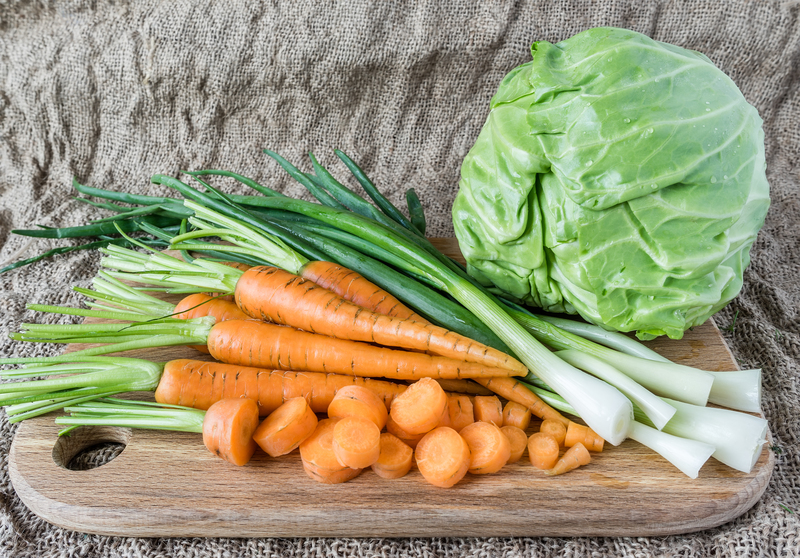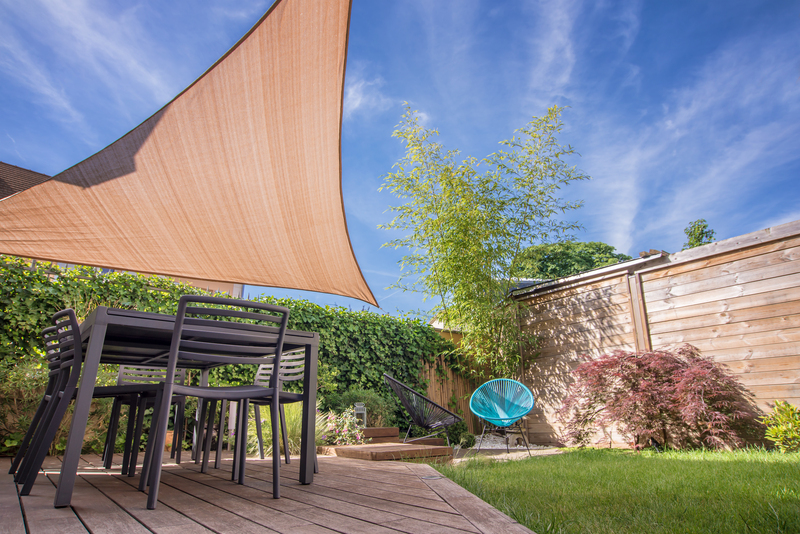Transforming Your Space with a Beautiful Herb Garden
Posted on 25/09/2025
Transforming Your Space with a Beautiful Herb Garden
Creating a lush, aromatic, and vibrant herb garden is more than just a gardening project--it's a lifestyle transformation. As people search for ways to reconnect with nature, enhance their living spaces, and enjoy healthier meals, herb gardens have soared in popularity. Whether you have a sprawling backyard or a sunny windowsill, transforming your space with a beautiful herb garden can bring flavor, fragrance, and energy to your home.

Why Choose a Herb Garden?
Herb gardens are not only attractive but highly functional. Here are some compelling reasons to start your own:
- Freshness and Flavor: Homegrown herbs add unmatched aroma and flavor to your culinary creations.
- Cost-Effective: Growing herbs at home can save money compared to buying them at the store.
- Health Benefits: Many herbs boast natural health properties, aiding digestion, immunity, and wellness.
- Sustainability: Reduce your carbon footprint by growing your own herbs, minimizing packaging and transport emissions.
- Decorative Appeal: Herb gardens offer vibrant greenery and can be artfully designed to elevate any space.
- Stress Relief: Gardening has proven mental health benefits, reducing stress and improving mood.
Enhancing Interior and Exterior Spaces
A beautiful herb garden can be designed for both indoor and outdoor environments. From elegant window boxes to expansive kitchen gardens, transforming your space with an herb garden provides creative outlets and practical rewards.
Getting Started: Planning Your Herb Garden
Good planning ensures your herb garden will thrive. Consider the following steps:
- Site Selection: Identify areas with at least 4-6 hours of sunlight daily. South-facing windowsills, balconies, patios, and kitchen counters can work perfectly.
- Container or In-ground? Decide whether you want a container garden or plan to plant directly in soil. Containers work well for small spaces or rental properties.
- Herb Choices: Consider your favorite herbs for cooking and aesthetics. Basil, thyme, rosemary, mint, parsley, and cilantro are popular and easy to grow.
- Design Inspiration: Think about the overall look you'd like to achieve. Do you prefer a rustic, wild look, or a more structured, modern style?
Essential Tools and Materials
Before planting, gather your supplies:
- Quality Potting Mix suited for herbs
- Containers--anything from clay pots to wooden crates
- Starter plants or seeds
- Watering can or gentle hose attachment
- Plant markers to keep varieties organized
- Fertilizer (preferably organic)
- Gardening gloves (optional but recommended)
Herb Gardening for Small Spaces
Transforming small spaces with a charming herb garden is easier than you might think. For city dwellers and apartment owners, creative solutions include:
- Vertical gardens: Wall-mounted planters or hanging baskets can maximize limited space.
- Window boxes: Install these outside your kitchen or living room for easy access and natural beauty.
- Mason jars or teacups: Repurpose glass jars or beautiful cups for a quirky, eco-friendly touch.
- Tiered shelves: A ladder shelf by a sunny window can host several herbs in an artistic display.
Top Herbs for Indoor Gardens
These herbs are best suited for growing indoors and add elegance to your home:
- Basil: Thrives with warmth and sunlight, perfect for Italian dishes.
- Mint: Lively fragrance; great for teas and cocktails. Grows best in its own pot.
- Chives: Adds subtle onion flavor to many dishes and grows easily in small spaces.
- Parsley: A versatile garnish with rich color and nutrients.
- Cilantro: Essential for salsas and curries, although it prefers cooler temperatures.
Designing an Outdoor Herb Sanctuary
If you have a backyard or patio, consider developing a full-scale herb garden sanctuary. Outdoor herb gardens can anchor your landscape, attracting pollinators, and providing year-round visual interest.
Layout and Placement Tips
- Cluster by Watering Needs: Place drought-loving herbs (like rosemary, thyme, oregano) together, and keep moisture-lovers (basil, mint, parsley) in another zone.
- Edge Between Beds: Use low-growing herbs such as chives or creeping thyme as charming natural borders.
- Raised Beds: Installing raised garden beds improves drainage, deters pests, and creates an attractive visual feature.
Companion Planting for a Thriving Herb Garden
Certain herbs support each other's growth and deter pests naturally. For example, basil thrives next to tomatoes, repelling aphids and improving flavor. Rosemary and sage can help fend off cabbage moths when planted near brassicas. Pairing the right herbs can enhance the health and strength of your entire garden.
Easy-Care Herb Gardening: Maintenance and Seasonal Tips
A successful herb garden transformation requires a balance of attention and understanding. Here are foundational care tips:
- Watering: Herbs dislike soggy soil. Aim for even moisture, checking pots frequently indoors.
- Light: Ensure sufficient sunlight--ideally 6+ hours for most culinary herbs. Use grow lights if your space is dim.
- Pruning: Frequent harvesting encourages bushier, healthier plants. Never remove more than 1/3 of a plant at once.
- Feeding: Light feeding with organic fertilizer or compost tea boosts growth.
- Pests: Inspect leaves regularly. Use neem oil or soapy water for mild insect issues. Encourage beneficial insects outdoors.
Year-Round Herb Gardening
Herb gardens can be enjoyed year-round. With the right setup, you can harvest aromatic greens regardless of season. During colder months, move perennials like rosemary and thyme inside, or use a small indoor greenhouse. Overwintering herbs allows you to enjoy the aroma and freshness even when snow falls outside.
Creative Ways to Showcase Your Herb Garden
Elevate the look of your herb garden makeover with creative, stylish, and sustainable ideas. Here are some design inspirations:
- Label with Style: Use hand-painted wooden stakes, chalkboard markers, or engraved stones for herb labeling.
- Recycled Planters: Upcycle old boots, tin cans, wooden crates, or teapots as quirky and eco-friendly herb containers.
- Hanging Gardens: Suspend herb pots from ceiling hooks or wall brackets for a floating green effect.
- Themed Gardens: Design Mediterranean, medicinal, or cocktail-themed herb gardens for flavor and fun.
- Living Walls: Install vertical planting panels or pocket organizers on a balcony or fence for dramatic green decor.
Herb Gardens as Living Decor
A beautifully arranged herb garden can double as living decor in kitchens, entryways, or patios. Paired with colorful pots, macrame hangers, and rustic wooden shelves, your herb collection can transform bland spaces into lush, inspiring sanctuaries. The best part? Your decor is edible!
Harvesting and Using Homegrown Herbs
The reward for your herb garden transformation is the ability to snip fresh sprigs whenever you wish. Knowing how to harvest and use your herbs ensures their continued growth and your ongoing enjoyment.
Harvesting Tips
- Use sharp, clean scissors to cut without damaging plants.
- Morning is the best time to harvest, capturing peak flavor and aroma.
- Pinch basil before it flowers to keep it producing new leaves.
- Harvest parsley and cilantro from the outer, older stems first.
- Trim rosemary and thyme by snipping off sprigs from the ends.
Culinary Uses for Fresh Herbs
Fresh herbs can completely transform a meal, infusing dishes with vibrant flavors and fragrances.
- Basil: Essential in pesto, salads, and pasta.
- Rosemary: Perfect for roasting meats and vegetables.
- Mint: Refreshing addition to drinks, desserts, and Middle Eastern cuisine.
- Parsley: Adds brightness to sauces, salads, and soups.
- Cilantro: Key ingredient in salsas, chutneys, and curries.
Preserving Your Harvest
When your herb garden is thriving, preserve extras with these methods:
- Drying: Bundle stems and hang upside down in a dark, ventilated area.
- Freezing: Chop and freeze in ice cube trays with oil or water for easy flavor bombs.
- Infusing: Make herb oils, vinegars, or butters for gourmet treats.
Healing and Aromatic Benefits of Homegrown Herbs
A herb garden offers more than culinary delight. Many herbs have been used for centuries as home remedies and natural air fresheners.
- Lavender: Calming scent, helps with relaxation and sleep.
- Thyme: Antiseptic properties, useful in teas for colds and sore throats.
- Mint: Aids digestion, great for freshening breath.
- Sage: Traditionally used to ease sore throats and aid memory.
DIY Home Spa with Fresh Herbs
Create a soothing spa-like environment with your herb garden harvest:
- Add sprigs of mint or rosemary to bathwater for a refreshing soak.
- Brew herbal teas to help unwind after a busy day.
- Make your own herb-infused facial steam for glowing skin.

Tips for a Sustainable and Eco-Friendly Herb Garden
Make your herb garden transformation as environmentally friendly as possible with these best practices:
- Compost: Recycle kitchen scraps to create nutrient-rich compost for your garden.
- Save Seeds: Harvest seeds in late summer for next season's planting.
- Use Natural Pest Control: Companion planting, hand-picking pests, and neem oil are eco-friendly solutions.
- Collect Rainwater: Store rainwater for gentle, chlorine-free irrigation.
Conclusion: Enjoy the Transformation!
Transforming your space with a beautiful herb garden is an investment in aesthetics, wellness, sustainability, and culinary pleasure. Whether you design a minimalist kitchen windowsill display or develop a lush backyard sanctuary, you'll experience daily rewards in flavor, fragrance, and tranquility. Now is the perfect time to start your herb garden journey--your transformed space, and your senses, will thank you!
If you found this article helpful, share your herb garden success stories or questions in the comments below. Happy planting!

